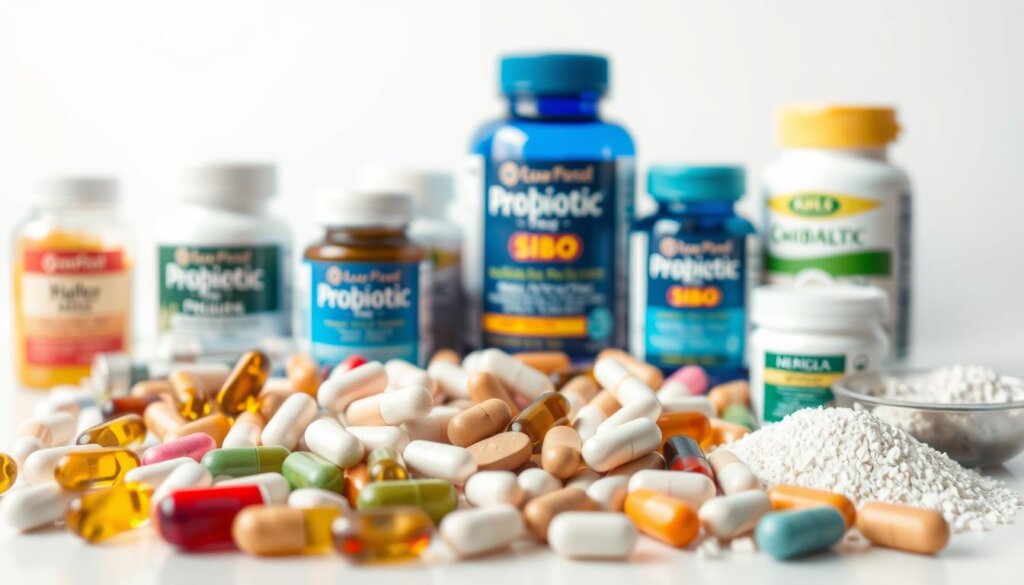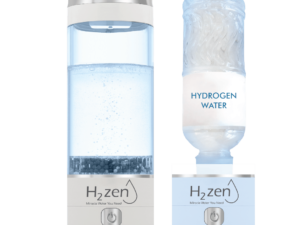Many people struggle with bloating, irregular digestion, and discomfort without realizing the root cause. Small intestinal bacterial overgrowth (SIBO) affects up to 78% of those with IBS, leading to symptoms like diarrhea, constipation, and nutrient deficiencies. The imbalance of bacteria in the gut can disrupt daily life, making it essential to find effective solutions.
Wellness Group specializes in guiding individuals through SIBO management, offering expert advice tailored to different types—such as SIBO-D (diarrhea-dominant) and SIBO-C (constipation-dominant). Hydrogen and methane gas production often play a role in diagnosis, highlighting the need for personalized care.
For those seeking support, Wellness Group is available via WhatsApp at +60123822655. Their team helps navigate dietary adjustments and gut-friendly strategies. Learn more about probiotics for gas relief to complement your approach.
Key Takeaways
- SIBO is linked to IBS and affects many people with digestive issues.
- Different types, like SIBO-D and SIBO-C, require unique management.
- Hydrogen and methane levels are key in diagnosing the condition.
- Expert guidance can help tailor solutions for better gut health.
- Wellness Group offers personalized support via WhatsApp.
Understanding SIBO: Causes and Risk Factors
What many assume is routine bloating might signal a deeper gut issue. When bacteria multiply excessively in the small intestine, it leads to discomfort and systemic symptoms. Identifying the triggers is the first step toward balance.
What Leads to Bacterial Overgrowth?

Click to LEARN MORE
Low stomach acid, often due to aging or prolonged use of PPIs, allows bacteria to thrive. Opioids and antibiotics further disrupt the gut’s natural balance. Structural problems, like a malfunctioning ileocecal valve, can also trap bacteria where they shouldn’t be.
Common Risk Factors for Developing SIBO
Certain conditions increase susceptibility:
- IBS: Nearly 78% of IBS patients have overlapping SIBO.
- Diabetes: Slow gut motility fuels bacterial buildup.
- Frequent antibiotic use: Wipes out good bacteria, letting harmful strains dominate.
- Autoimmune disease: Conditions like scleroderma impair digestion.
Addressing these factors early can help restore gut harmony.
Symptoms and How SIBO Is Diagnosed
Persistent bloating and fatigue may signal more than just a passing issue. When gut bacteria overgrow, they trigger a range of uncomfortable symptoms. Recognizing these signs early can lead to faster relief.
Common Signs of Bacterial Imbalance
People with this condition often experience:
- Abdominal pain or cramping after meals
- Pencil-thin stools or steatorrhea (fatty stools)
- Chronic bloating and excessive gas
- Nausea or vitamin deficiencies (like B12)
Hydrogen-dominant cases often cause diarrhea, while methane-linked ones lead to constipation.
How Diagnosis Works
A breath test is the most common tool. It measures hydrogen and methane levels after drinking a sugar solution. Results above 20ppm (hydrogen) or 10ppm (methane) suggest an imbalance.
Key details about testing:
- Tests last 90 minutes and use glucose or lactulose.
- False positives may occur if digestion is too rapid.
- Jejunal aspiration (gold standard) is rare due to invasiveness.
For accurate results, follow prep guidelines like fasting beforehand.
Treatment Options for SIBO
Restoring gut balance requires a strategic approach combining medical and dietary interventions. The right plan can reduce symptoms like bloating and irregular digestion while addressing root causes.
Antibiotics and Their Role in SIBO Management
Rifaximin, a non-absorbable antibiotic, is often prescribed at 550mg twice daily for 7 days. It targets the gut directly, with a 55–70% success rate in reducing bacterial overgrowth.
Concerns about resistance have led some to explore herbal alternatives like oregano oil or berberine. These may help when traditional antibiotics aren’t suitable.
The Importance of Diet in Controlling SIBO
A low-FODMAP diet limits fermentable carbs that feed problematic bacteria. Avoiding lactose, fructose, and polyols can starve overgrown microbes.
Nutrient absorption often suffers, so supplementing with B12 and fat-soluble vitamins (A, D, E, K) is crucial.
“Food choices can either fuel or fight bacterial imbalance,”

Click to LEARN MORE
notes a gut health specialist.
Best Probiotics for Managing SIBO
Not all bacterial strains are created equal—some may help restore balance more effectively. While certain supplements can worsen symptoms, others offer therapeutic benefits for gut health.

The Science Behind Helpful Strains
Specific strains like Saccharomyces boulardii show promise. A 2020 study found it outperformed metronidazole, with a 33% eradication rate. Its anti-inflammatory properties neutralize toxins linked to bloating.
Soil-based options, such as B. coagulans Unique IS-2, are non-colonizing. They reduce inflammation without lingering in the gut. Research notes a 93% improvement in symptoms with this strain.
“Targeted probiotics can recalibrate gut ecology without disrupting motility,”
Strains to Consider and Avoid
Here’s a quick comparison of effective versus risky options:
| Recommended Strains | Potential Benefits |
|---|---|
| Saccharomyces boulardii | Reduces inflammation, combats toxins |
| B. coagulans Unique IS-2 | Improves digestion, non-colonizing |
| Strains to Limit | Reasons |
| Lactobacillus-heavy blends | May fuel bacterial overgrowth |
For personalized guidance, consult a gut health specialist to match strains with your needs.
Lifestyle and Dietary Tips to Support SIBO Recovery
Simple daily adjustments can significantly improve gut health. Combining the right diet with mindful habits helps starve problematic bacteria and ease symptoms.
Foods to Steer Clear Of
High-FODMAP foods ferment quickly, feeding bacterial overgrowth. Common triggers include:
- Garlic and onions: High in fructans, which worsen bloating.
- Apples and legumes: Contain sugars that fuel gas production.
- Dairy and grains: Lactose and gluten may irritate the system.
Smart Swaps for Better Digestion
Opt for low-FODMAP alternatives like:
| Avoid | Choose Instead |
|---|---|
| Cauliflower | Zucchini or spinach |
| Wheat bread | Quinoa or rice |
| Milk | Lactose-free almond milk |
Daily Habits That Make a Difference
Beyond diet, these practices help:
- Meal spacing: Allow 4–5 hours between meals to reduce bacterial feeding.
- Hydration: Water supports motility and flushes toxins.
- Stress management: Yoga or meditation can improve digestion.
“Limiting high-FODMAP foods is often the first step toward relief,”
notes a digestive specialist. Small changes add up to lasting results.
When to Seek Professional Help
When digestive issues linger despite dietary changes, it may be time to consult a professional. Chronic bloating, unexplained weight loss, or frequent relapses often indicate deeper imbalances needing expert healthcare intervention.

How Wellness Group Can Assist
Wellness Group offers *personalized protocols* for gut balance, including:
- Breath testing to identify hydrogen or methane dominance.
- Custom meal plans targeting low-FODMAP or specific intolerances.
- Targeted probiotic regimens to restore microbial harmony.
“Our team tailors strategies to individual symptoms, ensuring sustainable results,”
Reach Out for Support
For quick inquiries, message via WhatsApp at +60123822655. Business hours:
| Day | Hours |
|---|---|
| Mon–Fri | 9:30 AM–6:30 PM |
| Sat–Sun | 10:00 AM–5:00 PM |
Weekend availability ensures flexibility for busy schedules.
Conclusion
Balancing gut health takes patience, but the right approach can ease discomfort. Recognizing SIBO’s link to IBS and using breath tests for diagnosis are crucial first steps. Targeted solutions, like specific probiotics, may help restore harmony.
Long-term management often requires expert guidance. Wellness Group tailors plans to individual needs, from dietary tweaks to bacterial overgrowth control. Their team ensures sustainable results.
For personalized support, reach out via WhatsApp. With the right care, relief is within reach.
FAQ
What causes bacterial overgrowth in the small intestine?
Several factors can lead to excessive bacteria in the gut, including slow motility, low stomach acid, or structural issues like scar tissue. Conditions like diabetes or autoimmune disorders may also increase risk.
How do doctors diagnose this condition?
A breath test is commonly used to measure hydrogen or methane levels, which indicate bacterial activity. Blood tests or stool analysis may also help identify nutrient deficiencies linked to the issue.
Can diet help control symptoms like bloating and gas?
Yes. A low FODMAP diet reduces fermentable carbs that feed harmful bacteria. Avoiding sugars, dairy, and processed foods can ease discomfort while supporting treatment.
Are antibiotics the only treatment option?
While antibiotics like rifaximin are often prescribed, herbal therapies and specific probiotics (e.g., Lactobacillus or Bifidobacterium strains) can also restore balance. Always consult a healthcare provider first.
What lifestyle changes support recovery?
Eating smaller meals, managing stress, and staying active improve gut motility. Hydration and fiber adjustments (based on tolerance) further aid digestion.
When should someone seek professional help?
If abdominal pain, diarrhea, or weight loss persists despite dietary changes, consult a specialist. Functional medicine clinics often offer tailored plans for complex cases.






